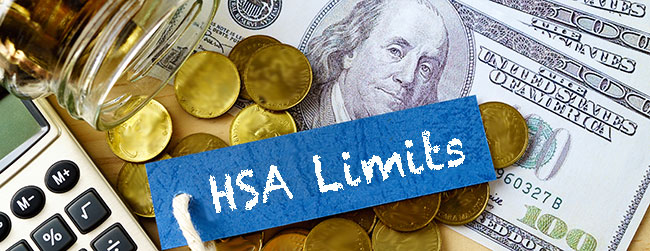
6.1.18
Every year, the IRS announces the annual limits for various types of employee benefits, such as Health Savings Accounts (HSAs). The IRS has already changed the 2018 annual limits for HSAs twice this year, which may have caused some confusion.
As background, amounts contributed to HSAs will not be subject to federal income tax up to the annual limit. Employees and employers can only contribute amounts for employees who are enrolled in a high deductible health plan (HDHP) and who do not have non-HDHP health coverage. If an employee withdraws amounts from the HSA and does not use them to pay for qualified medical expenses, the employee may incur a tax penalty.
Unlike flexible savings accounts, the contributed amounts cannot be forfeited at the end of the plan year. Instead, they are placed into a savings account that employees can use even after they terminate employment, making them an attractive benefit to employees.
Recent HSA Limit Levels
For 2017, the annual limit for self-only HSA coverage was $3,400 and the annual limit for family coverage was $6,750. In May 2017, the IRS announced the 2018 limits: individuals with self-only coverage would be able to contribute up to $3,450, and individuals with family coverage would be able to contribute up to $6,900 to their HSAs.
By January 2018, employers and service providers had programmed their systems to reflect the new 2018 limits, and, starting with the first payroll period in 2018, employees began to contribute to their HSAs. But in March 2018, the IRS announced a mid-year change. The IRS announced that while it would not change the self-only coverage limit, it would be reducing the family contribution limit by $50 to $6,850.
At the same time, the IRS also announced that it would be reducing the annual limits for adoption assistance programs. Originally, the maximum exclusion per adoption was set at $13,840. The IRS reduced this amount by $30 to $13,810. With regard to the adjusted gross income levels, the phase-out was slated to begin at $207,580 and be completed at $247,580. These figures were each reduced by $440, so that the phase out would begin at $207,140 and be completed at $247,140.
IRS Responds To Complaints
Some stakeholders complained about the mid-year changes; in particular, the reduction in the annual HSA limits received the brunt of criticism. They informed the IRS that some employees might have already contributed the maximum $6,900 and would have to seek a return of an excess contribution or be subject to excise taxes. Additionally, many employees who aim to contribute the maximum amount to their HSAs typically divide the annual maximum by the number of payroll periods so their paychecks are steady throughout the year. These employees would need to adjust their contributions to adapt to the changes, which might prove troublesome.
After receiving these complaints, the IRS released yet another Revenue Procedure in May 2018 increasing the family contribution limit back to $6,900. As such, the current HSA limits are $3,450 for self-only, and $6,900 for family. Interestingly, the IRS has not changed the adoption assistance programs limits.
Problems May Still Exist
While many stakeholders may be relieved that the limits were increased back to $6,900, there may still be practical implications for employers who offer HSAs to their employees. Before the May Revenue Procedure, some employers may have already distributed any amounts in excess of $6,850 to employees. If your organization did so, you may want to notify employees that it is possible for them to contribute up to $6,900, and, if they would like to contribute additional amounts, they may do so (up to the limit, of course).
Employees also may have questions regarding how the excess distribution will be treated. The IRS regulations and the May Revenue Procedure make clear that these amounts will generally not be included in the employee’s gross income, and will not be subject to the 20 percent excise tax. Additionally, since the limits changed twice, some employees may need additional assistance to calculate how much they should contribute for the remainder of the year to avoid exceeding the revised annual limits.
For more information, contact the author at MShimizu@fisherphillips.com or 949.798.2162.
***** ***** ****** ***** *****
Source: Fisher Phillips
https://www.fisherphillips.com/resources-newsletters-article-hsa-limit-changes?click_source=sitepilot06!3265!bGxleWRhQG9jY291cnRzLm9yZw
